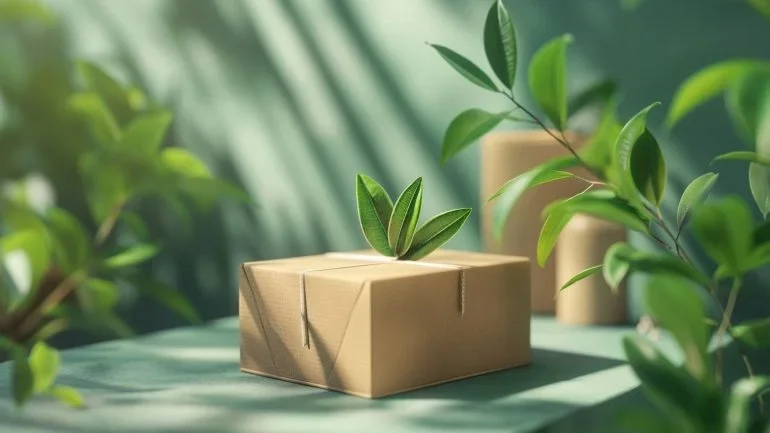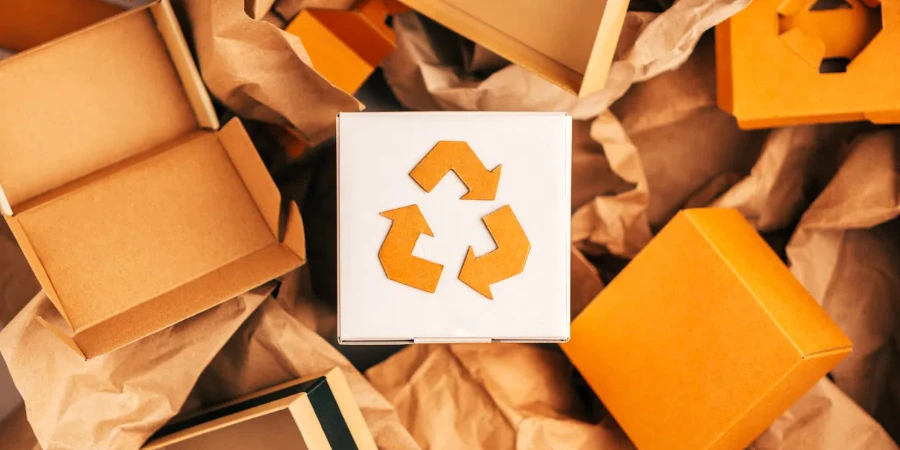As environmental concerns rise, the packaging industry is turning to innovative, eco-friendly materials such as algae and agave.

As the global environmental crisis intensifies, the need for sustainable solutions becomes more pressing.
The packaging industry, long criticised for its reliance on plastics, is now seeing significant innovation with the introduction of eco-friendly materials.
These new materials, sourced from algae, agave, and other renewable resources, promise to reduce the environmental impact of packaging significantly.
Revolutionising packaging with algae
Algae, one of the most abundant organisms on the planet, is emerging as a promising material for sustainable packaging. Companies are exploring the potential of algae as a raw material due to its rapid growth rate and minimal resource requirements.
Unlike traditional plastics, algae-based packaging is biodegradable and compostable, breaking down naturally without leaving harmful residues.
Researchers have developed various methods to transform algae into packaging materials. One approach involves extracting alginate, a biopolymer found in brown algae, to create films and coatings.
These films are flexible, durable, and have excellent barrier properties, making them suitable for food packaging. Additionally, algae can be processed into bio-plastics, which mimic the properties of conventional plastics but are far more environmentally friendly.
Agave: a by-product turned resource
Another innovative material gaining traction is agave, a plant traditionally used in the production of tequila. Agave fibres, once considered waste, are now being repurposed into sustainable packaging solutions.
This not only reduces waste from the tequila industry but also provides a new source of biodegradable material.
Agave-based packaging is known for its strength and durability, making it a viable alternative to conventional plastics. The fibres can be processed into various forms, including paper, cardboard, and bio-plastic composites.
These materials are not only biodegradable but also compostable, contributing to a circular economy where waste is minimised and resources are reused efficiently.
Beyond algae and agave: other sustainable innovations
While algae and agave are making headlines, other innovative materials are also being developed to address the environmental impact of packaging.
Mushroom mycelium, the root structure of fungi, is being used to create biodegradable packaging that is both sturdy and compostable. Mycelium grows quickly and can be moulded into various shapes, making it an ideal material for protective packaging.
Another promising material is polylactic acid (PLA), derived from renewable resources like corn starch or sugarcane. PLA is already being used in various packaging applications, from food containers to cutlery.
It offers the advantage of being compostable in industrial facilities, reducing the burden on landfills.
Moreover, seaweed-based packaging is gaining attention due to its abundant availability and environmental benefits. Seaweed grows rapidly, requires no fertilisers, and helps sequester carbon dioxide.
This makes it an ideal candidate for sustainable packaging solutions. Seaweed extracts can be processed into films and coatings with excellent barrier properties, suitable for a wide range of packaging needs.
Challenges and future prospects
While these innovative materials hold great promise, they also face several challenges. One of the primary obstacles is scalability. Producing sustainable packaging materials at a scale that can compete with traditional plastics remains a significant hurdle.
The cost of production is also currently higher for these eco-friendly alternatives, which can be a barrier to widespread adoption.
However, as technology advances and demand for sustainable packaging grows, these challenges are expected to diminish. Investment in research and development is crucial to improve production processes and reduce costs.
Moreover, consumer awareness and preference for eco-friendly products are likely to drive market growth, encouraging more companies to adopt sustainable packaging solutions.
Governments and regulatory bodies also play a vital role in promoting the use of sustainable materials. Policies and incentives that support the development and adoption of eco-friendly packaging can accelerate the transition away from traditional plastics.
Bans on single-use plastics and mandates for biodegradable alternatives are already being implemented in several regions, setting a precedent for the future.
The takeaway
The shift towards sustainable packaging materials is not just a trend but a necessary evolution in the face of environmental challenges.
Algae, agave, and other innovative materials offer viable alternatives to traditional plastics, promising to reduce pollution and promote a circular economy.
While there are challenges to overcome, the future of packaging looks greener with these sustainable innovations on the horizon.
By embracing these new materials and supporting further research and development, the packaging industry can significantly mitigate its environmental impact.
The journey from algae to agave represents a broader movement towards sustainability, heralding a new era of eco-friendly packaging solutions.
Source from Packaging Gateway
Disclaimer: The information set forth above is provided by packaging-gateway.com independently of Alibaba.com. Alibaba.com makes no representation and warranties as to the quality and reliability of the seller and products. Alibaba.com expressly disclaims any liability for breaches pertaining to the copyright of content.




